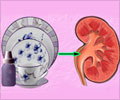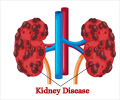Kidney stones are increasing, particularly among adolescents, females, and African-Americans in the U.S., a striking change from the historic pattern.

‘The trends of increased frequency of kidney stones among adolescents, particularly females, is concerning considering that kidney stones are associated with a higher risk of chronic kidney disease, cardiovascular and bone disease, particularly among young women.’





Tasian further added, "These trends of increased frequency of kidney stones among adolescents, particularly females, are also concerning when you consider that kidney stones are associated with a higher risk of chronic kidney disease, cardiovascular and bone disease, particularly among young women." The research by Tasian and colleagues appeared online today in the Clinical Journal of the American Society of Nephrology.
Researchers, clinicians and public health experts have been aware of the overall increase in kidney stones in children and adolescents, but the current study provided greater clarity on the specific groups of patients at greatest risk by analyzing age, race and sex characteristics among children and adults in South Carolina over a 16-year period, from 1997 to 2012.
Drawing on state medical records, the study team analyzed data from nearly 153,000 child and adult kidney stone patients from a total population of 4.6 million. Overall, the annual incidence of kidney stones increased 16% between 1997 and 2012. The greatest rates of increase were among adolescents (4.7% per year), females (3% per year), and African-Americans (2.9% per year). Between 1997 and 2012 the risk of kidney stones doubled during childhood for both boys and girls, while there was a 45% increase in the lifetime risk for women.
The highest rate of increase in kidney stones was among adolescent females, and in any given year, stones were more common among females than males aged 10 to 24 years. After age 25, kidney stones became more common among men.
Advertisement
Tasian added that the age, sex and race differences that his team found among kidney stone patients will require further study, but that the patterns they found may assist physicians and public health officials in designing targeted prevention strategies for people at higher risk for the condition.
Advertisement















